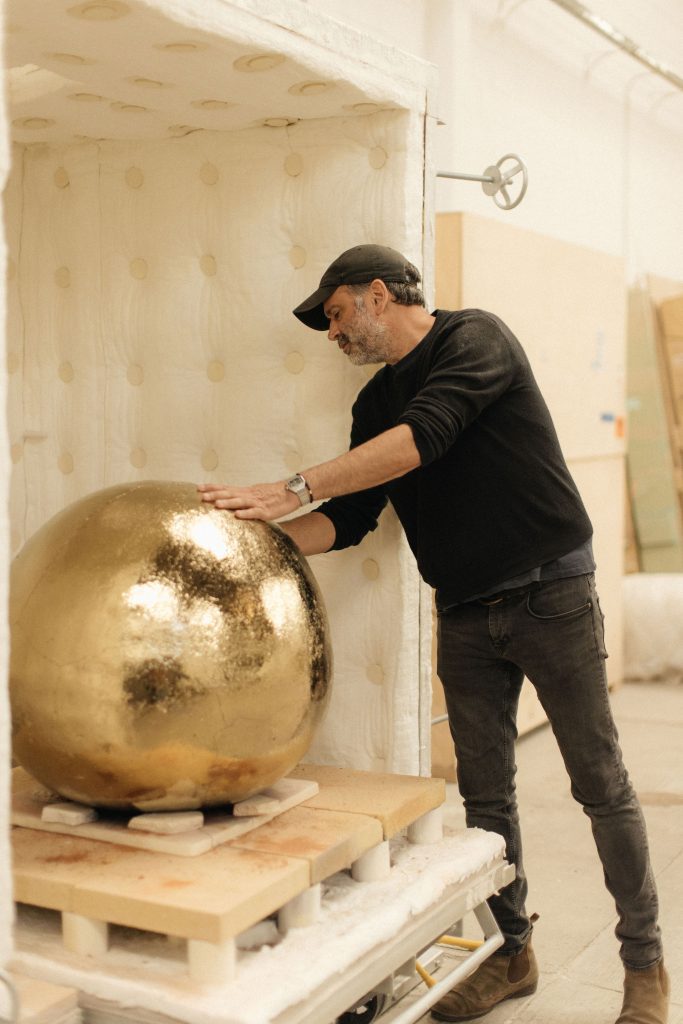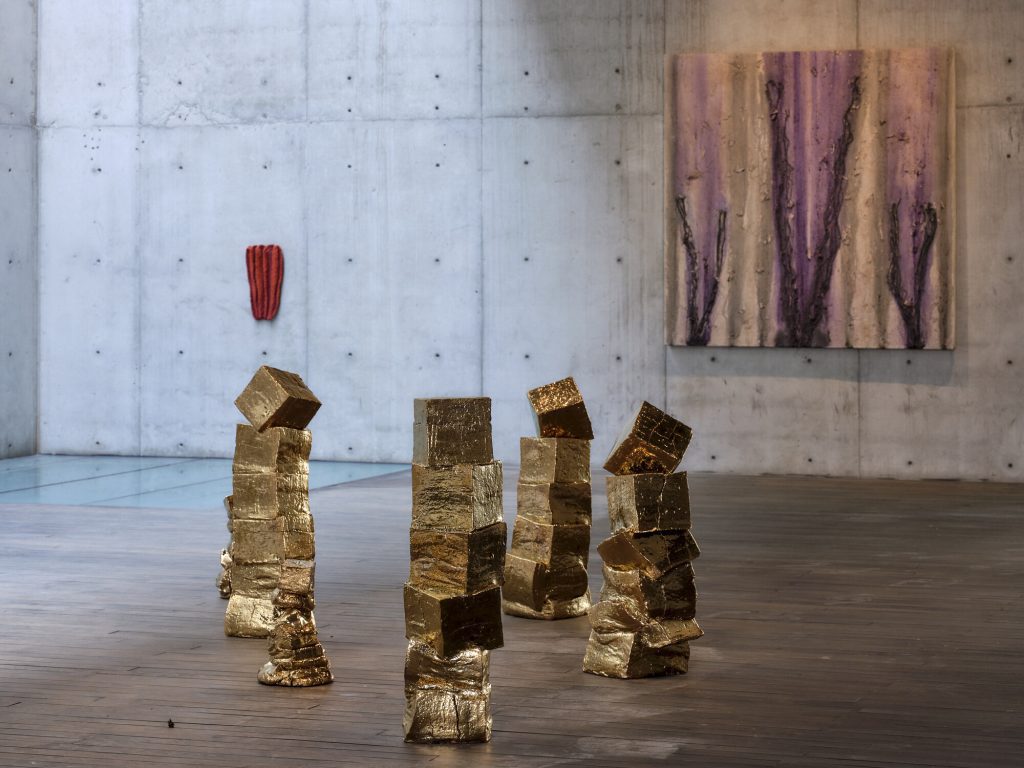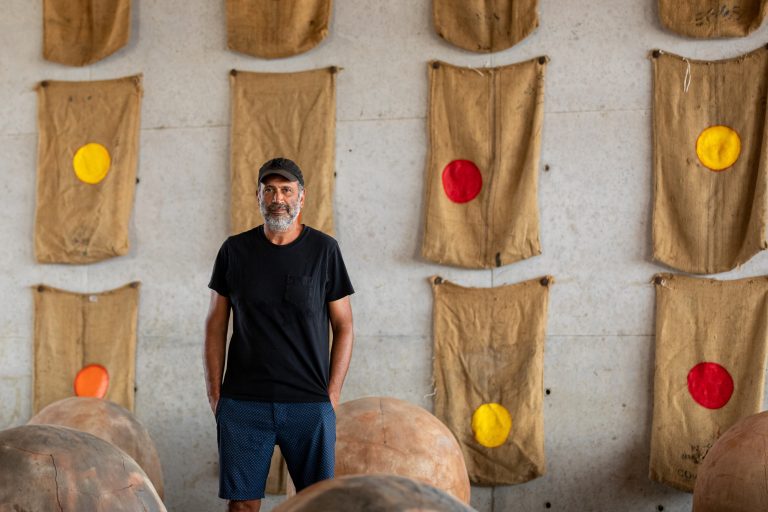
Photography by MAUREEN M. EVANS

Estudio B2
Photography by SERGIO LOPEZ
Let’s talk about inspirations, socio-political issues and texture – all in one discussion. Bosco Sodi, a Mexican contemporary artist born in 1970, is known for his richly textured paintings and sculptures made from raw, organic materials like volcanic ash, clay and sawdust. His work, which spans across studios in Barcelona, Berlin, Mexico and New York City, is deeply influenced by the Japanese philosophy of wabi-sabi, embracing imperfection and the beauty of natural processes. Sodi’s artistic journey began as a therapeutic pursuit, evolving into a successful career marked by such pieces as Muro in New York’s Washington Square Park.
hube: What initially inspired you to pursue a career in art?
Bosco Sodi: For me, art is like therapy. I used to visit my studio two or three times a week to work on my projects. It helped calm my nerves. One time, we took some of my pieces to be framed in Saint-Germain-des-Prés, Paris. And when I came to pick them up, somebody told me, ‘Listen, there are a lot of people that want to buy the work that they have seen here in the frame shop’. That’s when I realised there might be a chance to make a living doing what I love most: creating art.
h: Your work often incorporates raw materials like volcanic ash and pigments. What draws you to these materials?
BS: When you work with organic materials like pigments, clay or volcanic rocks, there’s more chance of surprise. They are not as predictable as chemical materials, which have a very clear formula. Working with sawdust, clay and volcanic mix is more fun for me because the results are always unique. My work is about the lack of control, the passage of time and the accidents that make things unique and unrepeatable. Sometimes I work with old paintings, but I use raw, old sacks that already have a kind of universe in them. When I use volcanic rocks, I choose the ones I like and use them without changing their natural form. This unpredictability is what makes the process special for me.
h: Many of your artworks seem to awaken a sense of serenity and contemplation. How do you hope viewers will engage with your pieces?
BS: I hope my work, with its accidents and uniqueness, helps viewers reconnect with themselves, nature and other human beings. My goal is for people to feel humbled and see the temporality of life. I think it’s important now, more than ever, for people to reconnect with the Earth and themselves.
h: Your exhibition Rock and Roll – Bosco Sodi and Objects of Interests at Museu Casa das Rosas in São Paulo discusses themes of exploration, colonisation, and environmental impact. How do you approach these complex topics through your artwork, and what message do you hope to share?
BS: This exhibition continues the themes I explored in Venice, focusing on the movement of raw materials and the history of colonisation. Countries like Brazil and Mexico were exploited by conquistadors, and I want to highlight this history through materials like clay, sugar, salt and tobacco. For me, clay is essential because it unites humans; it’s part of our evolution. I also used sacks that carried precious goods from colonies to talk about coffee, sugar and gold. It’s about making people aware of the movement of these goods and the consequences of colonisation in a poetic way.

